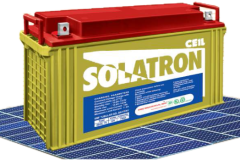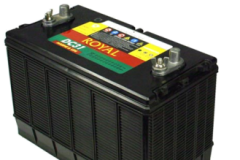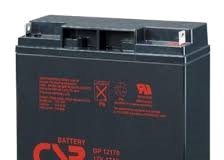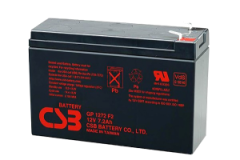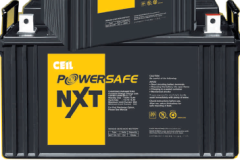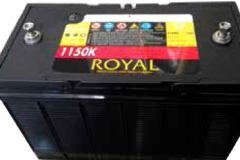What are Solar Batteries?
Solar batteries, often referred to as deep cycle batteries, are a critical component of off-grid and grid-tied solar systems. Unlike traditional sealed lead acid batteries, which are primarily designed for short bursts of high current, deep cycle batteries are engineered to provide sustained power over an extended period. These batteries come in various types, including flooded lead acid, gel, and absorbent glass mat (AGM) batteries. Each type has its advantages and is chosen based on specific system requirements. Solar batteries and deep cycle batteries serve distinct purposes, with each battery designed for specific energy storage needs in solar applications. A charge controller is an essential component in these setups as it manages the battery's charging and discharging processes, ensuring that the batteries are not overcharged or discharged beyond their depth of discharge (DoD) limits. Understanding the depth of discharge (DoD) is crucial as it determines how much energy a battery can safely release without damaging its overall capacity. In the world of solar energy, choosing the right battery and managing it effectively through a charge controller is paramount to achieving efficient and reliable energy storage for both residential and commercial applications.
The reserve capacity of photovoltaic batteries increases when it stores energy from sunlight. People can then use the stored power either at night or on cloudy days. Solar batteries make a higher current intensity possible. This is more so than with photovoltaic panels. It is especially necessary for the function of electrical appliances used simultaneously.
What is a Deep Cycle Battery?
Deep cycle batteries are like car batteries in appearance, although there is a distinction. Deep cell batteries provide power over long periods. They run efficiently until they only have 40% of their discharge rate left. At this point, deep cell batteries need recharging. To extend the life of your battery, recharge your battery when the internal discharge is 45%. We refer to the level of discharge as the "deep cycle".
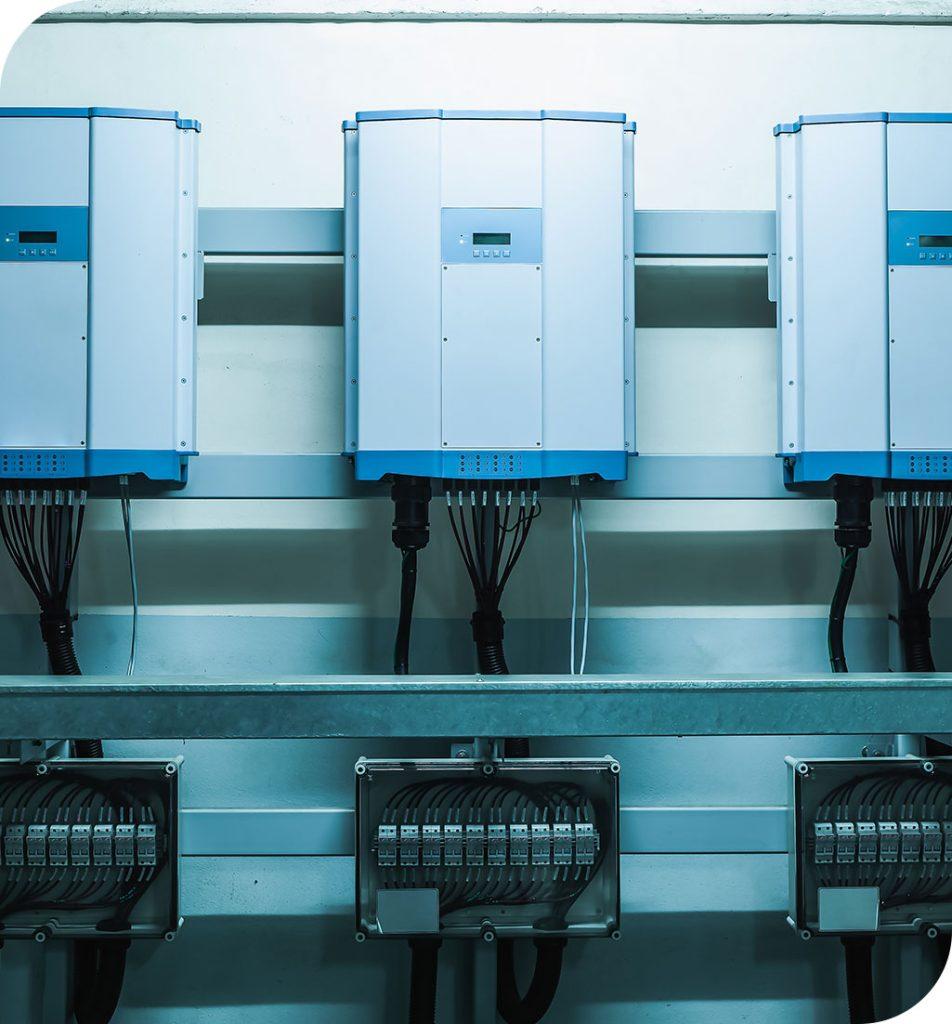
Solar batteries, typically 12V deep cycle batteries, play a vital role in energy storage within solar power systems, enabling the capture and utilization of solar-generated electricity for continuous power supply. Unlike starting batteries commonly found in vehicles, solar batteries, particularly deep cycle batteries, are specifically designed for the demands of solar power systems. Deep cycle batteries can be discharged over a more extended period and recharged repeatedly, which is essential for solar applications. These batteries are rated in amp hours (Ah) and watt hours (Wh) to indicate their capacity and energy storage capabilities. The capacity of deep cycle solar batteries depends on factors such as the size of the solar panel used to charge them, the efficiency of the charging process, and the depth of discharge. Typically, a 12-volt battery is employed in solar power systems, as it can provide stable power for an extended period of time.
Deep cycle batteries, especially lead-acid batteries, are known for their ability to deliver consistent power and a long cycle life. They are designed to withstand the rigors of frequent charging and discharging while maintaining their full capacity. Properly charging deep cycle batteries is essential to maximize their efficiency and longevity in a solar power system. Selecting the right size solar panel to charge these batteries is crucial, as it determines the rate at which the battery gets charged. Overall, deep cycle solar batteries are a vital component in ensuring that the energy generated from solar panels is stored and efficiently utilized, providing a reliable and sustainable source of power. 12V batteries, such as deep cycle batteries, are essential for storing solar energy, ensuring uninterrupted power supply.
Can I Charge My Deep Cycle Battery with Solar?
Yes, it is possible to charge deep cycle batteries with solar energy. The charging process works best in remote locations. An example is water-related work or when out fishing. It also applies to electric vehicles and golf carts.
To make this happen, you will need to use solar panels for your rechargeable battery. Invest in solar panels as a solar charger. This solution enables you to enjoy this clean power source.
The time it takes for a 100 Amp hour battery to charge is 5 hours. For best results, use 300-watt solar panels or three 100-watt solar panels for solar energy. These energy density options will give you a more regular deep discharge.
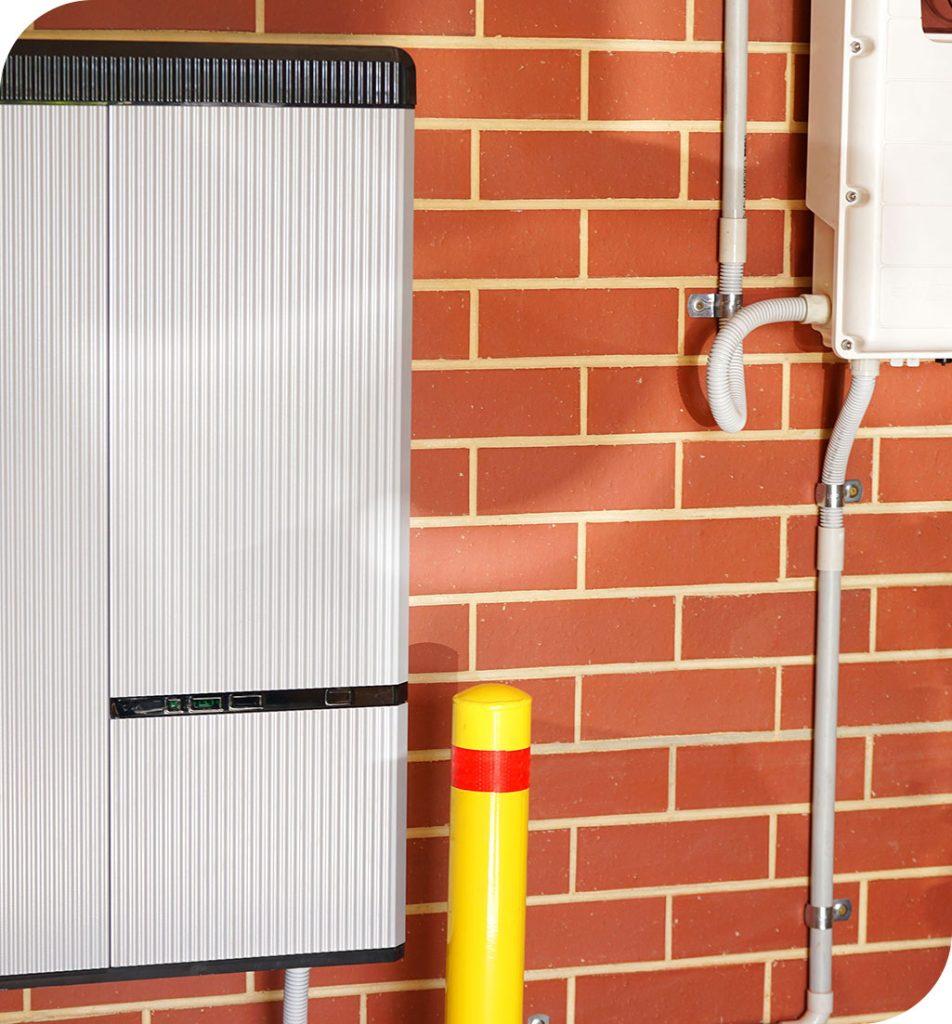
How Many Batteries Do I Need?
When setting up a solar panel installation with battery storage, determining the number of batteries you need is a crucial step in designing an efficient and reliable system. The answer to this question depends on several factors, including your energy needs, the capacity of your solar panels, and your desired level of energy independence. Let's delve into the calculations to help you determine how many batteries are necessary for your solar panel installation.
1. Calculate Your Daily Energy Consumption:
Start by assessing your daily energy consumption. This can be determined by reviewing your electricity bills or using energy monitoring tools. Express this figure in kilowatt-hours (kWh).
2. Assess Solar Panel Output:
Next, consider the capacity of your solar panels and how much energy they generate on average per day. Solar panels are typically rated in watts, and their daily energy output depends on factors like location, orientation, and weather conditions. To calculate daily solar production in kWh, multiply the panel's capacity in watts (W) by the number of hours of sunlight received on average.
Daily Solar Production (kWh) = Panel Capacity (W) × Average Daily Sunlight Hours
3. Determine Desired Battery Autonomy:
Battery autonomy refers to the number of days your system can operate solely on battery power without receiving solar input. The desired autonomy will depend on your location and how often you experience cloudy days or power outages. For example, a common autonomy period is three days.
4. Calculate Battery Capacity:
To calculate the battery capacity required, multiply your daily energy consumption by the desired autonomy period:
Required Battery Capacity (kWh) = Daily Energy Consumption (kWh) × Desired Autonomy Period (days)
5. Account for Battery Efficiency:
Batteries are not 100% efficient; they experience some energy losses during charging and discharging cycles. To account for these losses, divide the required battery capacity by the battery's efficiency factor (usually around 0.8):
Actual Battery Capacity (kWh) = Required Battery Capacity (kWh) / Battery Efficiency
6. Determine Battery Voltage:
The battery voltage you need depends on your inverter and system design. Common battery voltages include 12V, 24V, and 48V. Choose a battery voltage that matches your inverter and system requirements.
7. Calculate the Number of Batteries:
To find the number of batteries required, divide the actual battery capacity (kWh) by the individual battery's capacity (kWh). Keep in mind that battery capacity varies between different models and brands. For example, if you have 10 kWh of actual battery capacity and each battery has a capacity of 2 kWh:
Number of Batteries Required = Actual Battery Capacity (kWh) / Battery Capacity per Unit (kWh)
8. Consider Maintenance and Longevity:
Lastly, consider the maintenance requirements and lifespan of the batteries. Batteries degrade over time, so it's essential to factor in replacement costs and maintenance considerations.
These calculations provide a general guideline for determining the number of batteries needed for your solar panel installation. However, it's advisable to consult with a professional solar installer who can provide more precise recommendations based on your specific requirements and local conditions. Additionally, advancements in battery technology may influence your decision, so staying informed about the latest developments is essential for optimizing your solar power system.
How to extend your deep cycle battery life
Extend the discharge cycle life of batteries by charging your battery slowly. Premature battery failure results from charging your regular battery for only a few hours. Instead, charging your regular battery slowly is preferable. It will prevent premature battery failure.
If your current charger raises internal temperatures, this could damage it. Fast charging can raise the internal temperature of a deep cycle battery, too.
How to manage an off-grid setup
When selecting the right size solar panel for your off-grid setup, it's essential to consider factors like energy consumption and battery voltage. A common choice for many off-grid applications is a 12-volt solar panel system. These systems are designed to efficiently charge 12-volt battery banks. They run on 12 volts output. When appropriately sized, these solar panels can generate enough power to keep your batteries fully charged while running your devices and appliances, ensuring a reliable and sustainable power source for your remote location or off-grid adventure.
State of Charge
The state of charge (SoC) of a battery refers to the current level of energy stored within it, typically expressed as a percentage. It indicates how much capacity is available for use. To accurately determine the SoC, one must consider the charge voltage, which is the electrical potential applied to the battery during the charging process. The charge voltage plays a crucial role in both replenishing the battery's energy and ensuring its longevity. Properly managing the charge voltage is essential to maintain a battery's health and extend its lifespan, as overcharging or undercharging can lead to adverse effects such as reduced capacity or even damage.
Calculating the state of charge (SoC) for a battery is a critical task in monitoring its performance and estimating its remaining capacity. To determine SoC, you can use the battery's voltage measurements. Let's consider a 12-volt lead-acid battery with a known voltage of 12.6 volts when fully charged and 11.8 volts when almost fully discharged. By measuring the battery's voltage at a given moment, you can use a simple linear interpolation to estimate its SoC.
For example, if the battery's voltage measures 12.0 volts, you can calculate the SoC as follows:
SoC = [(Battery Voltage - Discharged Voltage) / (Fully Charged Voltage - Discharged Voltage)] * 100
SoC = [(12.0 V - 11.8 V) / (12.6 V - 11.8 V)] * 100
SoC ≈ (0.2 V / 0.8 V) * 100
SoC ≈ 25%
In this scenario, the battery's state of charge is estimated to be approximately 25%. This calculation helps in understanding how much usable energy is left in the battery and when it might need recharging to prevent deep discharge, which can be detrimental to battery life.
How Long Do Solar Batteries Last?
Expect your regular battery to last between 5 and 15 years. Although unit failure happens in this window, solar power systems can last from 20 to 30 years.
Types of Deep Cycle Battery Available at Virtual Sense Power
The 2 main types of batteries used for solar energy are lithium-ion and lead-acid batteries.
Get all battery types from VSP, South Africa. These include:
- Dual batteries
- Flow batteries
- Gel cell battery options
- Lead-Acid batteries
- Lithium-ion battery options
- Battery accessories
Find out More About Batteries from Your Expert Energy Advisor
Get the energy independence you deserve with South Africa's #1 power company. We supply energy requirements to suit all applications and can help you with a solar setup. VSP is here to advise you on an integrated battery system for solar power, from the lead-acid or gel battery. For the best solar battery price contact us.
Do you need to know more about the depth of discharge of deep cycle batteries and battery banks? Do you know the difference between a gel battery and lithium battery? Find out more about backup battery power from us and get the right solution for your needs today.
CONTACT US


